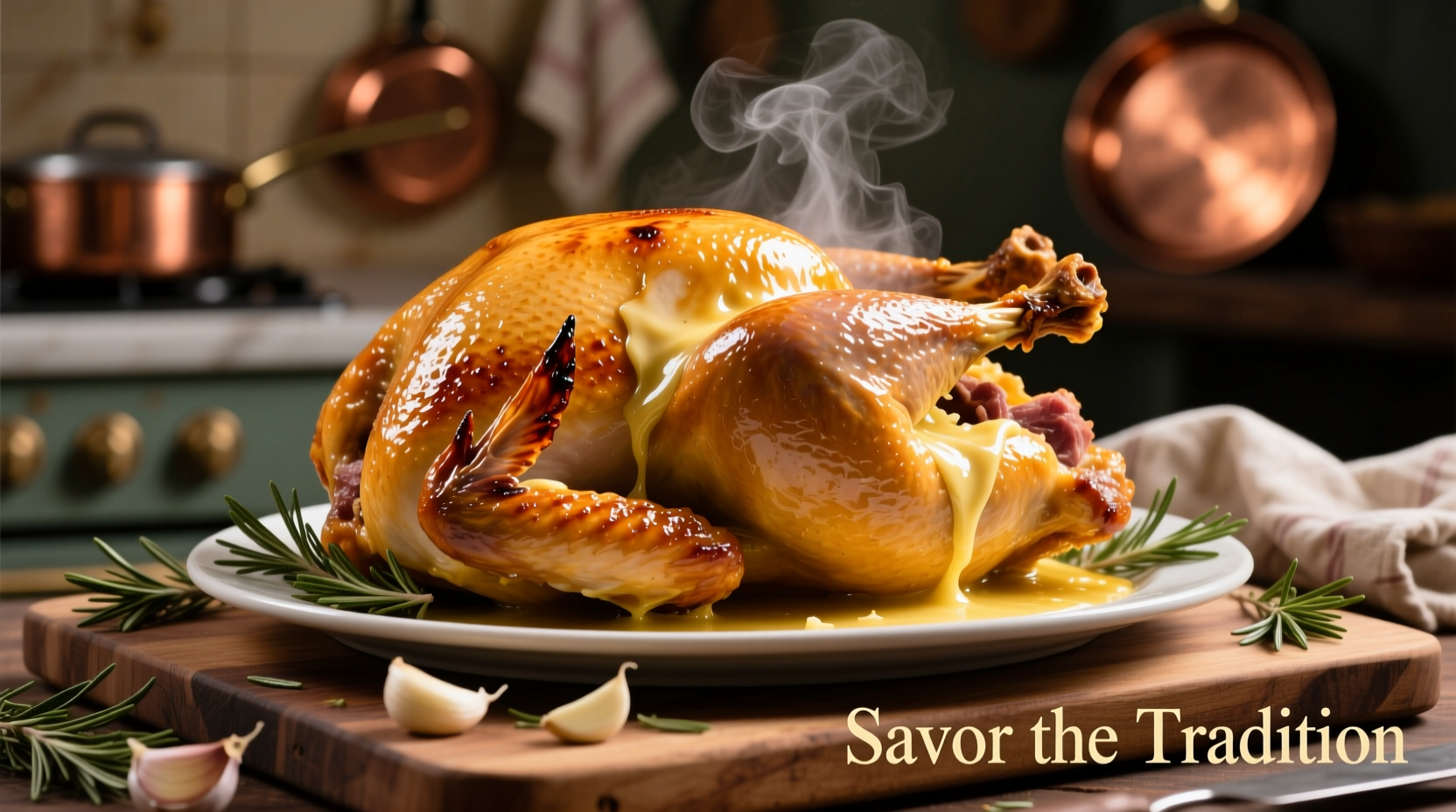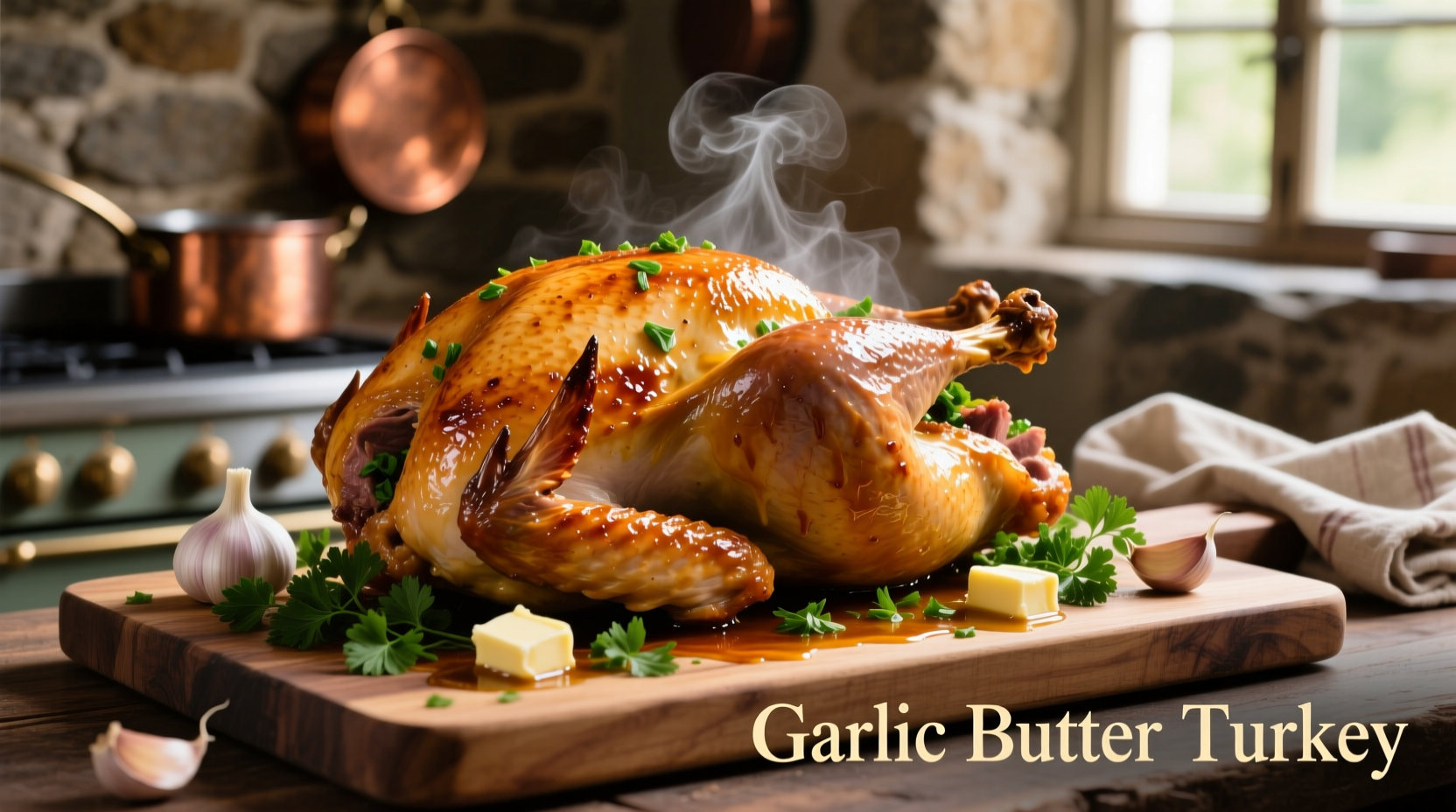Garlic butter turkey delivers perfectly moist, flavorful meat with crispy skin when prepared correctly. The ideal internal temperature for safe consumption is 165°F (74°C) in the thickest part of the breast and thigh, according to USDA food safety guidelines. This comprehensive guide provides step-by-step instructions, professional techniques, and science-backed tips for creating restaurant-quality garlic butter turkey every time.
Nothing elevates a holiday centerpiece quite like garlic butter turkey. This beloved preparation method transforms ordinary roasted turkey into a show-stopping dish with aromatic garlic notes and rich buttery flavor that penetrates deep into the meat. Whether you're preparing your first Thanksgiving feast or refining your holiday cooking skills, mastering garlic butter turkey ensures tender, juicy results that impress every time.
Why Garlic Butter Turkey Works
The magic of garlic butter turkey lies in the science of fat-based flavor transfer. Butter's high fat content carries garlic's volatile compounds deep into the turkey's muscle fibers during cooking, creating more complex flavor than surface seasoning alone. Professional chefs at the Culinary Institute of America recommend using compound butter because its lower water content than olive oil prevents steam buildup under the skin, which is crucial for achieving perfectly crisp skin.
| Turkey Weight | Recommended Cooking Time | Resting Time |
|---|---|---|
| 8-12 lbs | 2.5-3 hours | 30-40 minutes |
| 12-16 lbs | 3-3.75 hours | 40-50 minutes |
| 16-20 lbs | 3.75-4.5 hours | 50-60 minutes |
Essential Ingredients Checklist
Quality ingredients make the difference between ordinary and extraordinary garlic butter turkey. For authentic flavor development, use European-style butter with higher fat content (82-84% butterfat) rather than standard American butter (80% butterfat). Fresh garlic provides brighter flavor than pre-minced varieties, while a combination of fresh rosemary and thyme creates the most balanced herbal profile.
According to flavor pairing research published by the Journal of Food Science, garlic complements turkey's mild flavor profile particularly well because both contain sulfur compounds that enhance each other's savory characteristics. The addition of lemon zest in your compound butter creates a bright counterpoint that prevents the richness from becoming overwhelming.

Step-by-Step Preparation Guide
1. Compound Butter Preparation
Combine 1 cup softened unsalted butter, 6 minced garlic cloves, 2 tablespoons each of chopped fresh rosemary and thyme, 1 tablespoon lemon zest, 1 teaspoon black pepper, and 1.5 teaspoons salt. Mix thoroughly but avoid overworking the butter, which can cause separation during cooking. Professional chefs recommend using a rubber spatula rather than an electric mixer for better texture control.
2. Turkey Preparation Technique
Dry the turkey thoroughly with paper towels—this critical step, often overlooked by home cooks, ensures proper browning. Gently loosen the skin from the breast and thigh meat using your fingers, being careful not to tear it. This creates pockets for the garlic butter to penetrate directly against the meat. Insert approximately two-thirds of your compound butter beneath the skin, distributing it evenly. Rub the remaining butter over the exterior, then refrigerate uncovered for 12-24 hours to allow flavors to develop and the skin to dry for optimal crispness.
3. Roasting Process
Preheat your oven to 325°F (163°C). Place turkey breast-side up on a rack in a roasting pan. Insert an oven-safe meat thermometer into the thickest part of the breast. Roast until the thermometer reads 150°F (66°C), then remove from oven—the temperature will continue rising to the safe 165°F (74°C) during resting. Baste only during the last hour to prevent skin moisture buildup. For even cooking, rotate the pan 180 degrees halfway through roasting.
Troubleshooting Common Issues
Dry meat: This typically occurs from overcooking or insufficient butter penetration. Always use a meat thermometer and remove turkey at 150°F (66°C) for carryover cooking. Ensure you've properly separated the skin from the meat to allow butter infusion.
Pale skin: If your turkey lacks golden color, your oven temperature may be too low or the skin wasn't sufficiently dried before roasting. Increase oven temperature to 425°F (218°C) for the final 20 minutes of cooking for better browning.
Bitter garlic flavor: Burnt garlic creates unpleasant bitterness. Minimize this by using fresh garlic (not pre-minced), avoiding excessive browning of butter during preparation, and covering garlic exposed on the turkey surface with foil if browning too quickly.
Serving and Storage Guidelines
Allow turkey to rest for 15 minutes per pound before carving—this critical step lets juices redistribute throughout the meat. The USDA recommends consuming leftovers within 3-4 days when stored properly in shallow containers at 40°F (4°C) or below. For optimal flavor retention when reheating, place turkey in a covered dish with a splash of broth and warm at 300°F (149°C) until heated through.
Flavor Variations to Explore
Once you've mastered the classic preparation, experiment with these professional variations:
- Herb-Infused: Add tarragon and sage to your compound butter for earthier notes
- Citrus Twist: Substitute orange zest for lemon and add a tablespoon of honey to the butter
- Spiced Version: Incorporate a pinch of cayenne and smoked paprika for subtle heat
- Wine-Enhanced: Deglaze pan drippings with 1/2 cup dry white wine for a sophisticated gravy
Perfect Pairing Suggestions
Garlic butter turkey's rich flavor profile pairs beautifully with roasted root vegetables and acidic side dishes that cut through the richness. Consider serving with:
- Cranberry-orange relish (the acidity balances the fat)
- Roasted Brussels sprouts with balsamic glaze
- Wild rice pilaf with toasted pecans
- Light, crisp white wines like Sauvignon Blanc or unoaked Chardonnay











 浙公网安备
33010002000092号
浙公网安备
33010002000092号 浙B2-20120091-4
浙B2-20120091-4